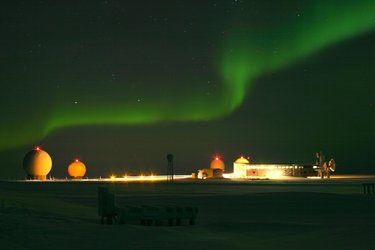ESA to build its third deep space ground station in Argentina
On 22 June, ESA informed Argentine authorities that an area 30 km south of the town of Malargüe in Mendoza province, about 1000 km west of Buenos Aires, has been chosen as the best option to build a new 35-metre antenna in support of its programmes.
It is the first infrastructure to be built in Argentina by ESA.
"The site offers all the features that are required for a long-term ground segment investment. We are very pleased that we could pave the way for promising space missions with the support of the Argentine authorities," said Gaele Winters, ESA Director of Operations and Infrastructure.
Malargüe desert area offers ideal conditions
The decision, which is subject to successful completion of negotiations, is the result of several months of evaluation among 35 sites in both Chile and Argentina to establish ESA’s third deep space ground station as part of the ESA Tracking (ESTRACK) network.

The Malargüe site is situated in a desert area, free from radio interference and with frequency usage guaranteed in the longer term by Argentina’s National Communications Commission.
ESA’s deep space network currently has two 35-metre tracking stations, one in Cebreros, Spain, and the other in New Norcia, Australia. The third station in Argentina will join these and the seven other 15m stations forming the core ESTRACK network.
The 600-tonne dish will complete the 360-degree deep space coverage needed to ensure full telecommunications during mission-critical events and enhance the return of scientific data.
The antenna will become operational from mid-2012 in support of scientific and exploration missions. The finalisation of the legal framework with Argentina is anticipated end-August 2009, so as to allow for approval by the ESA Council in October 2009.















 Germany
Germany
 Austria
Austria
 Belgium
Belgium
 Denmark
Denmark
 Spain
Spain
 Estonia
Estonia
 Finland
Finland
 France
France
 Greece
Greece
 Hungary
Hungary
 Ireland
Ireland
 Italy
Italy
 Luxembourg
Luxembourg
 Norway
Norway
 The Netherlands
The Netherlands
 Poland
Poland
 Portugal
Portugal
 Czechia
Czechia
 Romania
Romania
 United Kingdom
United Kingdom
 Slovenia
Slovenia
 Sweden
Sweden
 Switzerland
Switzerland







































